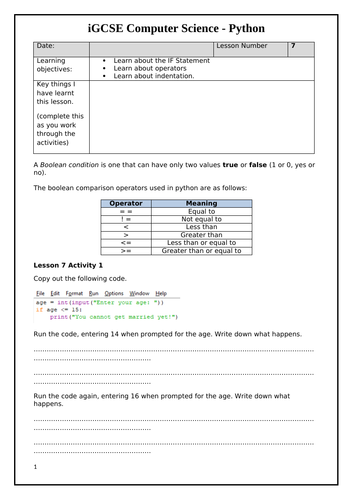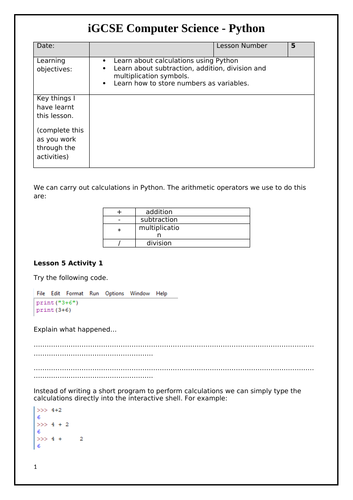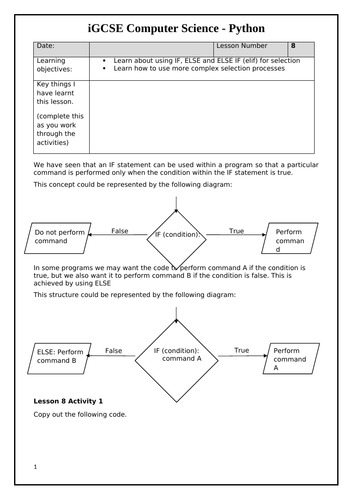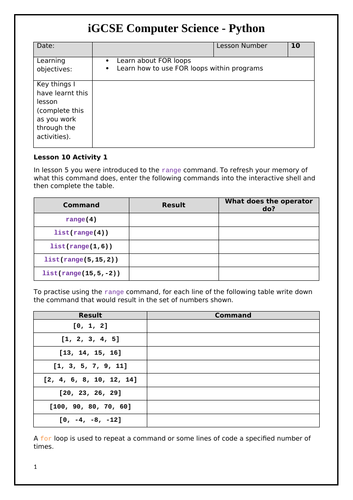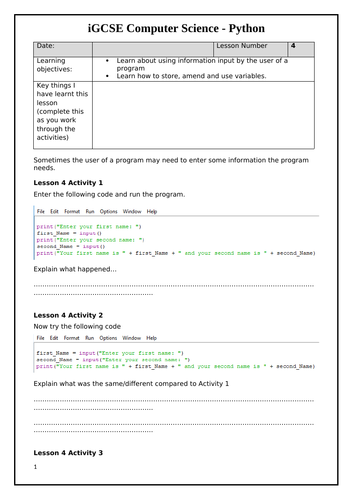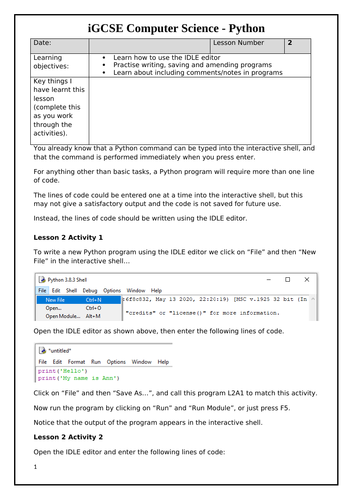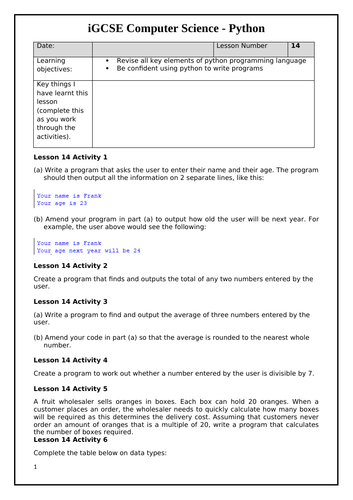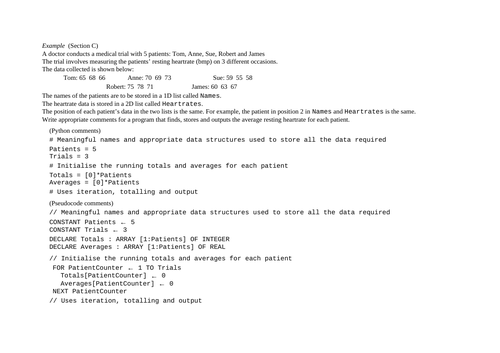31Uploads
11k+Views
7k+Downloads
All resources

IF statements in Python
This short booklet introduces how the IF statement is used within Python programs, and includes several programming tasks.
The booklet is designed for pupils to work through independently, so they can progress and learn at their own pace and you just support and guide as necessary.
Solutions are included in a separate booklet.

Calculations in Python
This short worksheet introduces how different types of calculations are performed in Python, and how numbers can be input by a user and stored or used within a program. The worksheet includes a number of short programming tasks at the end.
The booklet is designed for pupils to work through independently, so they can progress and learn at their own pace and you just support and guide as necessary.
Solutions are included in a separate booklet.

Data types, comparisons and substrings in Python
This booklet covers the names of data types in Python and how to work with different types of data. It includes use of comparison operators, rounding values, and finding substrings.
The booklet is designed for pupils to work through independently, so they can progress and learn at their own pace and you just support and guide as necessary.
Solutions are included in a separate booklet

Using ELSE and ELIF in Python
This 7-page booklet introduces how ELSE and ELIF are used within Python programs, and includes lots of programming activities for pupils to practise writing algorithms using these commands.
The booklet is designed for pupils to work through independently, so they can progress and learn at their own pace and you just support and guide as necessary.
Solutions are included in a separate booklet.

FOR loops in Python
This 8-page booklet introduces how FOR loops work within Python, giving pupils lots of practise using them in programming activities. Nested FOR loops are also covered.
The booklet is designed for pupils to work through independently, so they can progress and learn at their own pace and you just support and guide as necessary.
Solutions are included in a separate booklet.

WHILE loops in Python
This booklet introduces how WHILE loops are used within Python, giving pupils lots of programming activities to practise using them.
The booklet is designed for pupils to work through independently, so they can progress and learn at their own pace and you just support and guide as necessary.
Solutions are provided in a separate booklet.

Using the input command in Python
This short worksheet introduces how the input command allows the user of a Python program to enter strings, and how to store the input.
The booklet is designed for pupils to work through independently, so they can progress and learn at their own pace and you just support and guide as necessary.
Solutions are included on a separate sheet.

Using variables in Python programs
This short booklet introduces how variables are defined and used within Python.
The booklet is designed for pupils to work through independently, so they can progress and learn at their own pace and you just support and guide as necessary.
Solutions are included in a separate booklet.

Writing and saving Python programs using the IDLE editor
This short booklet shows pupils how they use the IDLE editor to write and save programs. It also shows how comments can be added within programs.
The booklet is designed for pupils to work through independently, so they can progress and learn at their own pace and you just support and guide as necessary.
Solutions are included in a separate booklet.

Python revision activities
This booklet of activities is designed to help your students revise the key Python programming skills they need for the iGCSE course.
It covers inputs and outputs, calculations, data types, comparison operators, IF statements, FOR loops, WHILE loops, and lists/arrays (1D and 2D).
There are over 30 activities for pupils to work through, including many programming tasks.
The booklet is designed for pupils to work through independently, so they can progress and learn at their own pace and you just support and guide as necessary.
This resource has been updated for the new specification for exams from 2023, so includes some activities working with 2D lists.
Solutions to all activities are included in a separate booklet.

15 mark unseen scenario question - 0984 iGCSE Computer Science (final question on paper 2)
This resource is designed to help students develop and practise the skills and knowledge needed to answer the final 15-mark question on Paper 2 - a programming task on a particular scenario.
Section A focuses on choosing and defining/declaring appropriate data structures for storing the required data. There are notes with some examples, then a 3-page exercise for students to practise this part of the task.
Section B focuses on identifying the programming technique(s) needed to solve different types of programming tasks. There are notes with some examples, then a 3-page exercise for students to practise this part of the task.
Section C shows students what types of comments they are expected to write to explain their code. It shows the typical structure of comments for both Python and pseudocode, and then there is an example task to work through as a class.
Section D is a chance for students to practise writing full solutions to tasks that involve only 1D lists. There is an example to work through as a class, followed by an exercise with 18 tasks of increasing difficulty, including some tasks that require a procedure or a function.
Section E is a chance for students to practise writing full solutions to tasks that involve 2D lists. There is an example to work through as a class, followed by an exercise with 17 tasks of increasing difficulty, including some tasks that require a procedure or a function.
Full solutions are provided to all the tasks in the exercises, written in both Python and pseudocode. Solutions to the examples are also provided in a separate resource.

